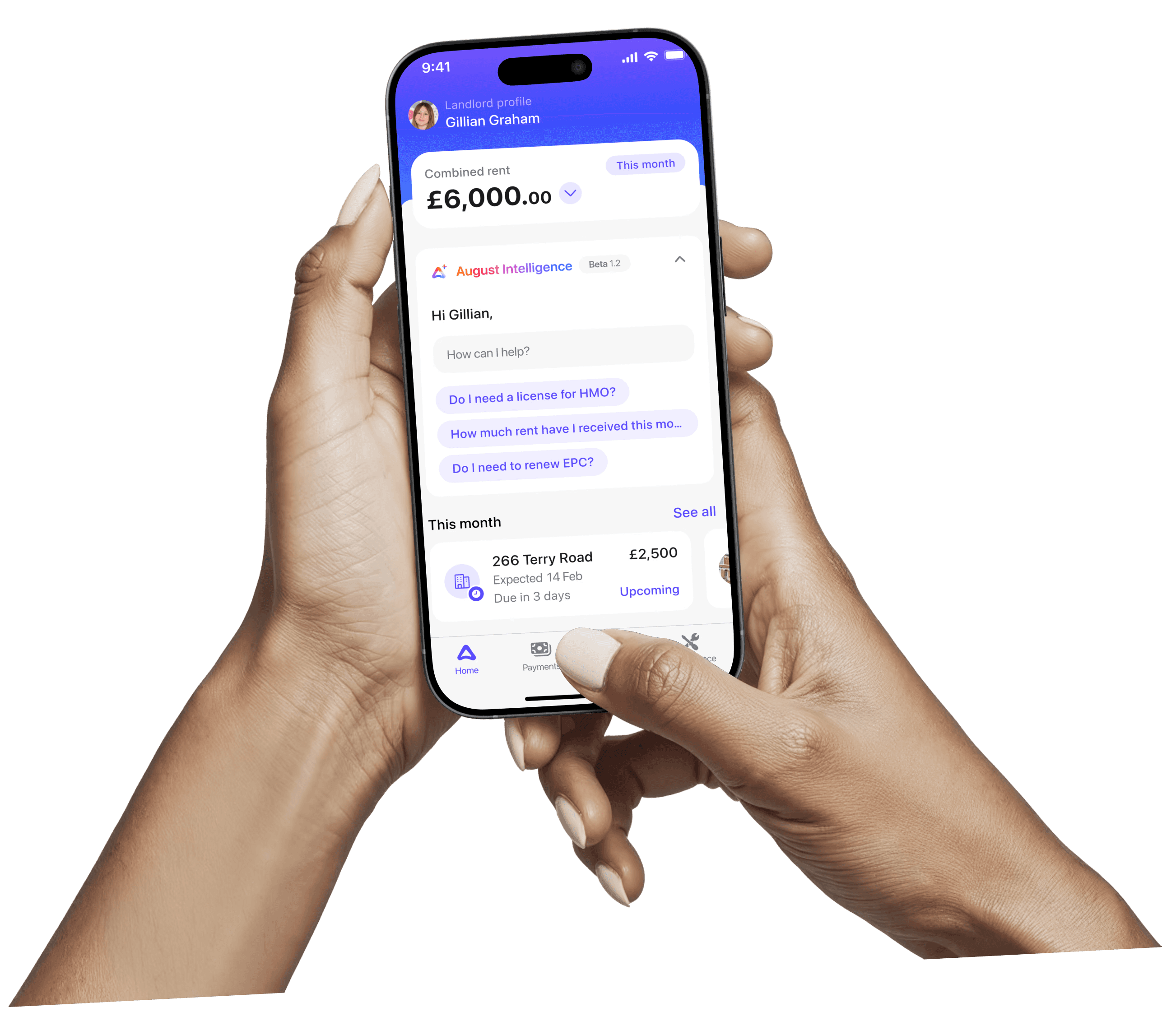Making Tax Digital (MTD) for Landlords
March 26, 2025
As a landlord in the UK, keeping ahead of tax requirements is essential. Starting from April 2026, Making Tax Digital for Income Tax Self-Assessment (MTD for ITSA) becomes compulsory for many landlords. While the introduction of MTD for VAT over recent years has given many businesses a taste of digital record‑keeping and quarterly reporting, MTD for ITSA takes that concept further for landlords with property income.
Now is the perfect moment to get up to speed. If you haven’t started preparing, or you're using dated systems, this article will steer you expertly through:
Key dates you must know
Quarterly reporting requirements
Penalties and potential traps
Software options tailored for landlords
Practical tips to stay compliant and reduce administration
1. Key dates for Landlords under MTD for ITSA
Understanding the timeline is the first step:
October 5, 2025: Deadline to register voluntarily for MTD for ITSA ahead of compulsory use. Even if you're not required, registering early gives you time get ready.
April 6, 2026: Beginning of the tax year 2026–27. This is when the requirement for MTD for ITSA becomes compulsory for specified landlords.
April 2026 onwards: Quarterly submission schedule begins for income and expenses under MTD for ITSA.
January 31, 2027: Deadline for filing the MTD‑enabled Self‑Assessment for the 2025–26 tax year (which remains under the older paper/digital method).
January 31, 2028: First compulsory MTD Self‑Assessment deadline covering the 2026–27 tax year.
2. Landlords must do quarterly reporting
Under MTD for ITSA, you’re not filing your Self‑Assessment just once a year. Landlords are required to submit digital updates every quarter. It works like this:
Report on property income and allowable expenses for each quarter.
Keep digital records of all transactions.
Submit at least one final End‑of‑Period Statement and submit your Self‑Assessment tax calculation digitally, by January 31 after the tax year-end.
The four quarters generally fall like this:
Quarter 1: April 6 – July 5. Submit by July 31 (2026)
Quarter 2: July 6 – October 5. Submit by October 31 (2026)
Quarter 3: October 6 – January 5. Submit by January 31 (2027)
Quarter 4: January 6 – April 5. Submit by April 30 (2027)
Then, in January 2028, you file the final tax calculation and payment (balancing payment plus Class 4 National Insurance if due).
Key tips:
Each submission needs to include income and expenses for that quarter, adjustments carried forward and any property allowances or reliefs.
Many landlords treat the annual tax return as the final statement (rather than sending a separate End‑of‑Period Statement).
Digital records must be maintained. Spreadsheets can work, but must integrate with compatible software.
3. What penalties are applied if you miss a deadline or delay
HMRC has established a penalty structure aimed at pushing compliance. For landlords under MTD for ITSA, penalties could arise in two contexts:
Late digital updates
If a quarterly submission is late, HMRC may charge a penalty based on:
A daily fixed rate (e.g. £10 per day) after an initial grace period.
More serious or prolonged lateness can trigger escalating penalty stages—like bricks‐and‑mortar fines or stand‑alone £100 fixed penalties.
Late or incorrect Annual Return and payment
Missing the January 31 deadline for tax and any payments on account still attracts the familiar late filing and late payment penalties, now enacted through the MTD system:
The late filing penalty is £100 immediately after deadline, then escalating if still not filed after 3, 6, 12 months.
The late payment penalties are 5% of the tax unpaid after 30 days, then additional 5% after 6 months, and further penalties after 12 months.
The difference now is that HMRC automatically knows if you’ve missed your quarterly submissions or failed your final submission, as it is tied into how the MTD system handles Self‑Assessment deadlines and makes enforcement swifter.
Avoiding penalties
Submit each quarterly update on time.
Submit your Finalised Self‑Assessment (End‑of‑Period Statement and tax calculation) by the January 31 deadline.
Pay what you owe promptly. Avoid relying solely on scheduled payments on account, which may not cover your final liability.
4. Choosing the right software
MTD compliance requires compatible software. As a landlord, even if your accounts are relatively simple, choosing the right platform saves time and reduces risk.
Here are key factors to evaluate:
Core capabilities
Banking integration – Are you able to pull bank feeds or integrate with bank account?
User interface: Is the UI clear, landlord‑friendly, maybe even mobile app?
Income/expense tracking - Can you manage both income and expenses?
Digital submission - Does it allow to to provide quarterly updates and the Final Statement?
Compatibility and HMRC Approval
Look for software on HMRC’s MTD for ITSA approved list. This ensures:
Seamless connection to HMRC for quarterly and annual submissions.
Regular updates to reflect changing allowances or deadlines.
Pricing structure
Subscription vs one‑off: What subscription tiers are offered (monthly or annual)?
Tiered plans: What tiered plan do they offer?
Support and social proof
Support levels: Do they offer customer support?
Knowledge base: Do they have a Knowledge base of FAQs?
Resources: Do they have good available resources?
Customer ratings: Do they have good app ratings?
Examples of software (illustrative based on 2025 offerings)
QuickBooks Self‑Employed / QuickBooks Online
Good at tracking income/expenses, HMRC‑connected, simple interface.
FreeAgent
Excellent for self‑service digital submissions, bank integration, quarterly reporting.
Xero + Add‑on like AutoEntry or Receipt Bank
Xero is powerful accounting software.
Combine with an OCR tool for receipts, tailor chart of accounts for property.
GoSimpleTax
Designed specifically for MTD for ITSA simplicity.
Step‑by‑step guidance, mobile and desktop support.
Landlord specific platforms (e.g. August App with MTD plugin)
These may not always be fully MTD‑enabled, but are catching up quickly, plus takes care of all your other landlord needs too.
5. Start taking action now
August is your perfect runway. Here’s what you can get done before April 2026:
Register (if ready) for MTD for ITSA
Voluntary registration opens ahead of the compulsory date. Even signing up now can give you peace of mind and time to learn the process.
Set reminders
Add quarterly submission deadlines and the January 31 final filing/payment into your calendar (creating reminders in August is simple, then get alerts either via the app, email or SMS).
Organise digital records
Ensure all your receipts, invoices, expenditure records are digitised—scanned or captured via app. HMRC expects digital preservation of your data. This is coming in August soon.
Understand allowable landlord expenses
Familiarise yourself with capital allowance carve‑outs, property finance costs, wear‑and‑tear vs replacement costs, furnishing relief (if still applicable), and how these are entered into your software.
Consult your accountant if unsure
If your portfolio is complex (e.g. mixed residential/commercial), or involves trusts, personal service companies, or furnished holiday lets, an accountant’s guidance on how to file digitally, especially for the quarterly updates, can avoid costly mistakes.
6. Embrace MTD for ITSA Early
Avoid being overwhelmed in 2026. Spread out compliance across quarterly submissions instead of lumping it into one annual panic‑fueled scramble.
Catch errors early. Quarterly reports mean you can spot booking errors, missing receipts, or mis‑allocations before they end up costing you in interest or penalties.
Cash flow visibility. Quarterly submissions will show your tax liability building in real time, so you can budget throughout the year rather than scrambling in January.
Digital maturity benefits. You’ll build a clean, digital financial habit which is handy for performance tracking, scaling up your property business, and making smarter decisions.
Summary recap
Section | Key takeaways |
Dates | Voluntary registration in autumn 2025. Compulsory registration from April 2026. Will include quarterly submissions. The final annual return by Jan 31, 2028. |
Quarterly reports | Must report income/expenses every quarter. Keep digital records. Submit one final calculation. |
Penalties | Late updates or filings incur daily and tiered penalties. Late payments are penalised similarly. |
Software | Start using August and start tracking rent. Expenses is coming soon as we build towards MTD requirements. |
Action now | Register with August, trial software, set calendar reminders, organise records, understand allowances, consult professionals as needed. |
Why it matters | Avoid year‑end panic, spot issues early, manage cash flow, and build digital fluency for your property business. |
Closing thoughts
The shift to Making Tax Digital for ITSA is a fundamental change in how landlords report and pay their taxes. But with thoughtful planning, especially beginning now in 2025, you can smooth your transition into 2026, safeguard against penalties, and actually improve how you monitor and manage your property income.
FAQs
What is Making Tax Digital (MTD) for Income Tax?
MTD for ITSA requires eligible sole traders and landlords to keep digital records and send quarterly updates and an end-of-year submission to HMRC using compatible software.
When does MTD for ITSA start for landlords?
From 6 April 2026 for those with qualifying income over £50,000, and from 6 April 2027 for £30,000–£50,000. (A future plan to lower to £20,000 has been signposted, but requires legislation.
What counts as ‘qualifying income’ for MTD?
Your total gross income from self-employment and property before expenses, including your share of joint property income.
How often do I need to send updates under MTD?
Four quarterly updates per tax year for each business, plus an end-of-period statement and a final declaration.
If I have both a trade and UK property income, how many updates is that?
You’ll submit separate quarterly updates for each business, so eight updates a year if you have one trade and one UK property business.
What are the default MTD quarterly periods and deadlines?
By default quarters follow the tax year (e.g. 6 April to 5 July) and the update is due by the 7th of the month after quarter-end (e.g. 7 August for Q1).
Do I still file a Self-Assessment return under MTD?
You’ll submit a final declaration after your quarterly updates instead of the traditional single annual return, confirming all income and reliefs.
Do I need specific software for MTD?
Yes, you must use MTD-compatible software to maintain digital records and send updates. Spreadsheets alone won’t be sufficient without bridging.
Will there be penalties for late MTD submissions or payments?
Yes. Late submission and late payment penalties apply, with reforms escalating charges after set intervals. Staying compliant and on time is essential.
How should landlords prepare for MTD now?
Confirm if and when you’re in scope, choose compatible software, digitise records, align to quarterly cycles, and test processes before April 2026/2027.
Disclaimer: This article is a guide and not intended to be relied upon as legal or professional advice, or as a substitute for it. August does not accept any liability for any errors, omissions or misstatements contained in this article. Always speak to a suitably qualified professional if you require specific advice or information.
Author
August Team
The August editorial team lives and breathes rental property. They work closely with a panel of experienced landlords and industry partners across the UK, turning real-world portfolio and tenancy experience into clear, practical guidance for small landlords.





